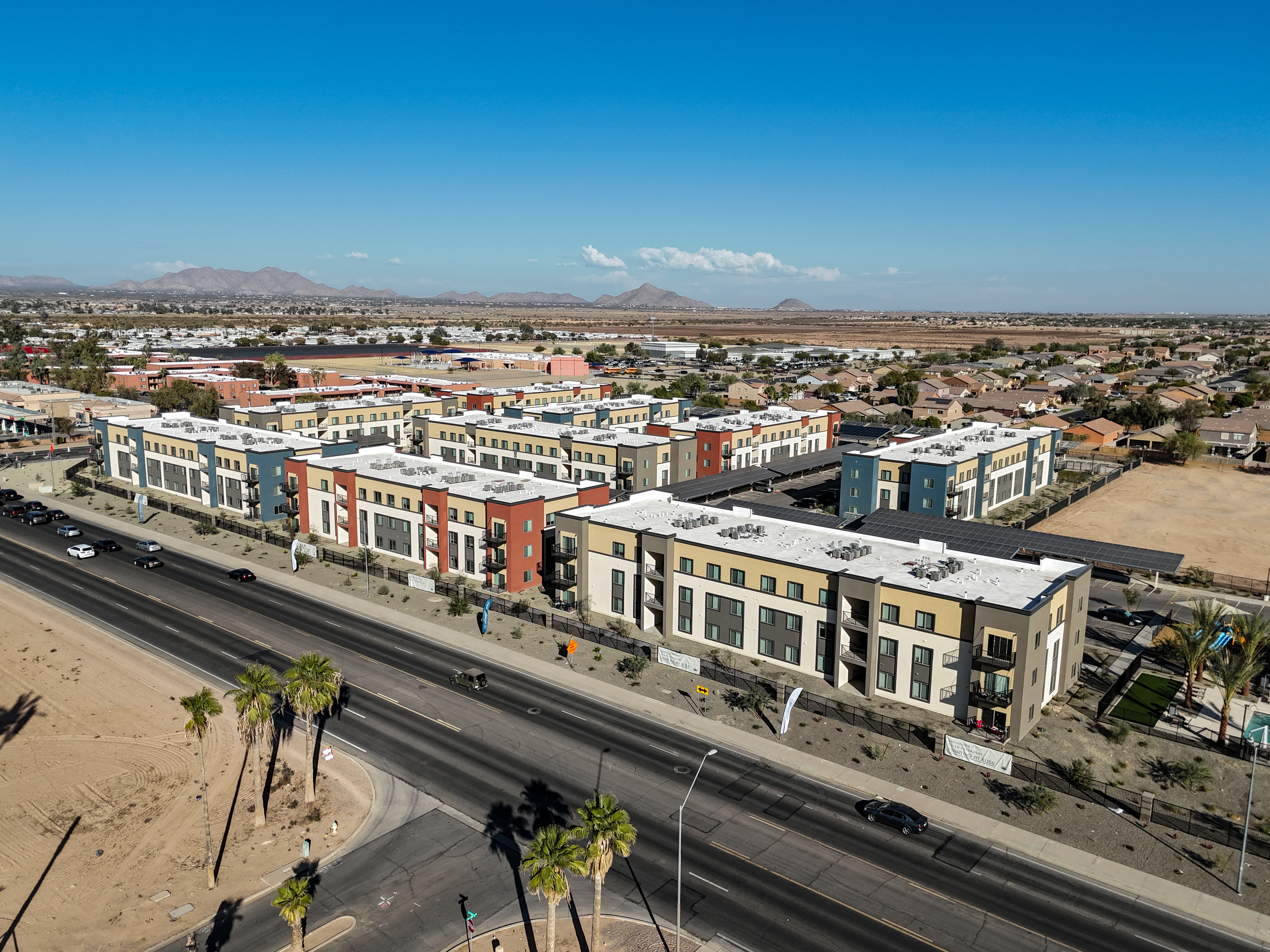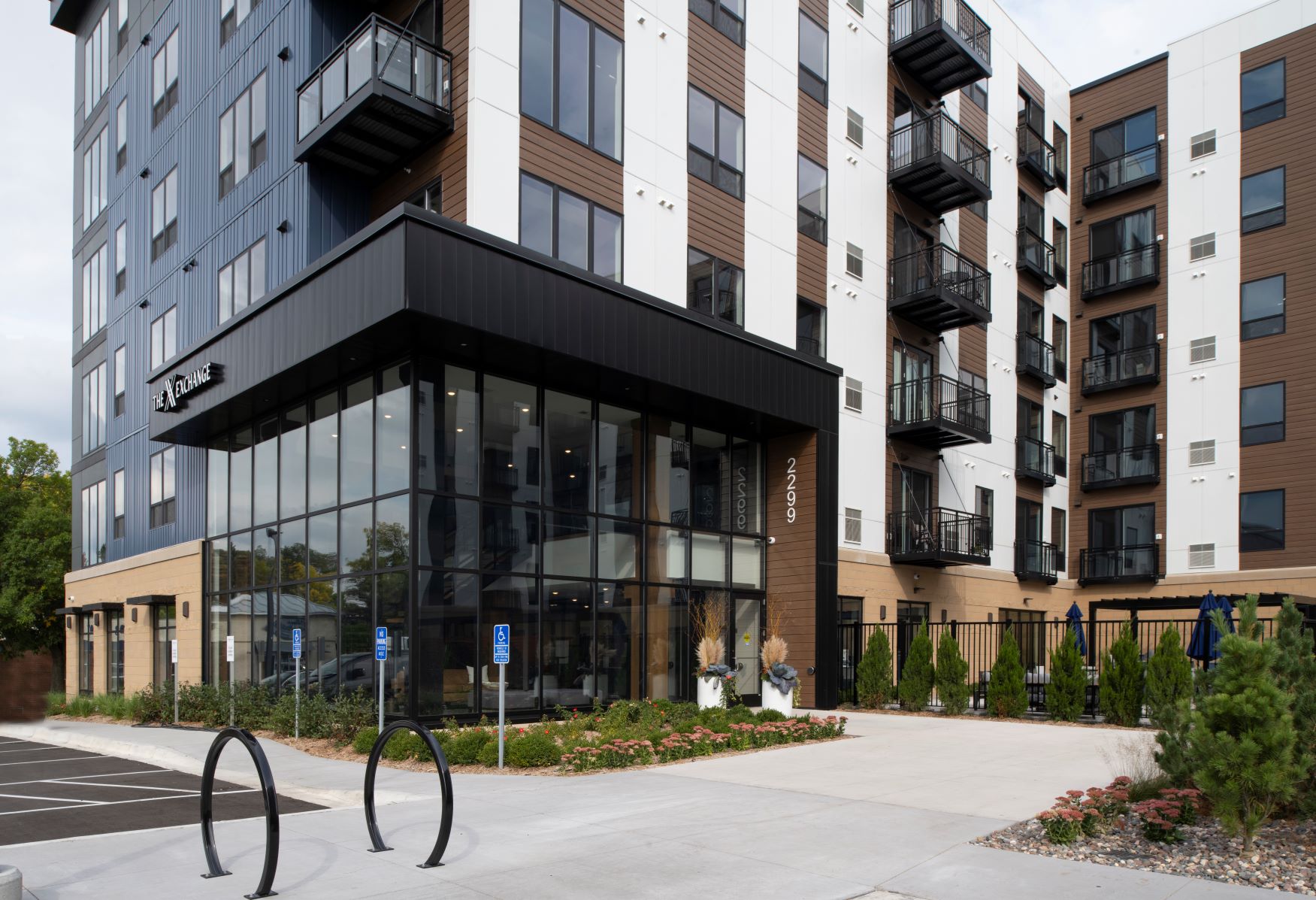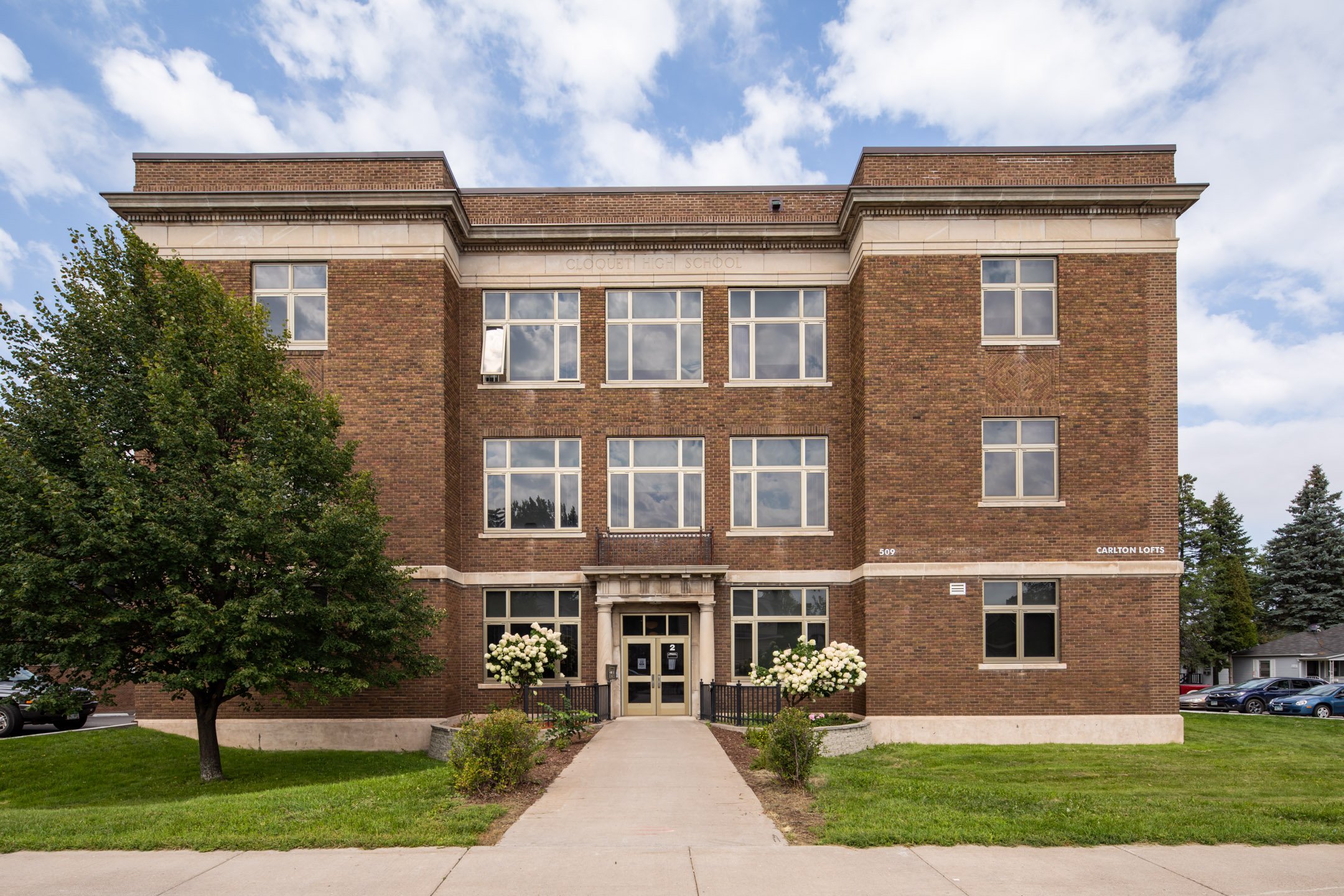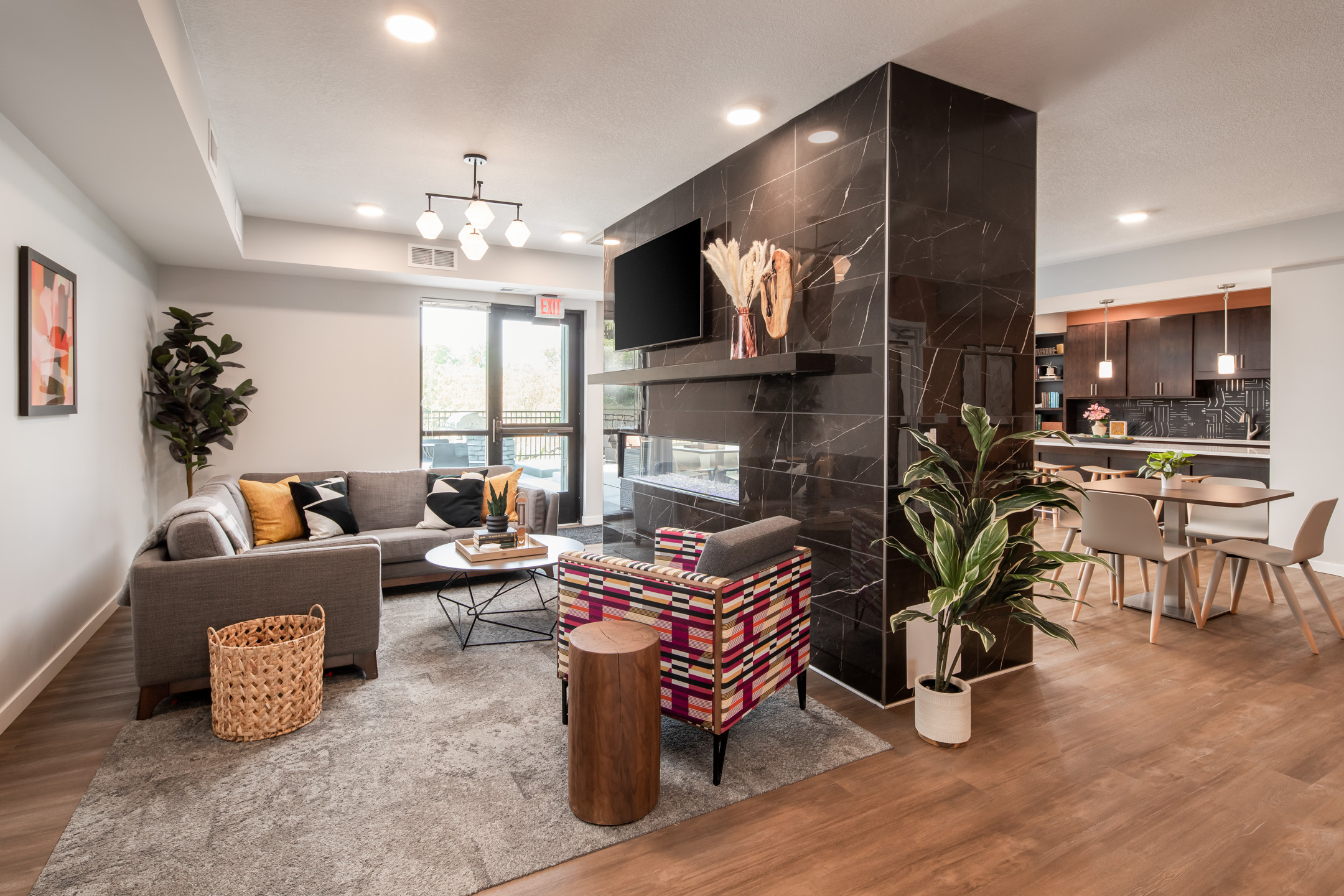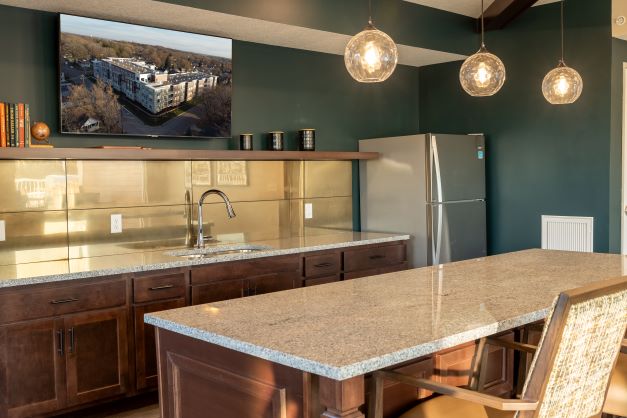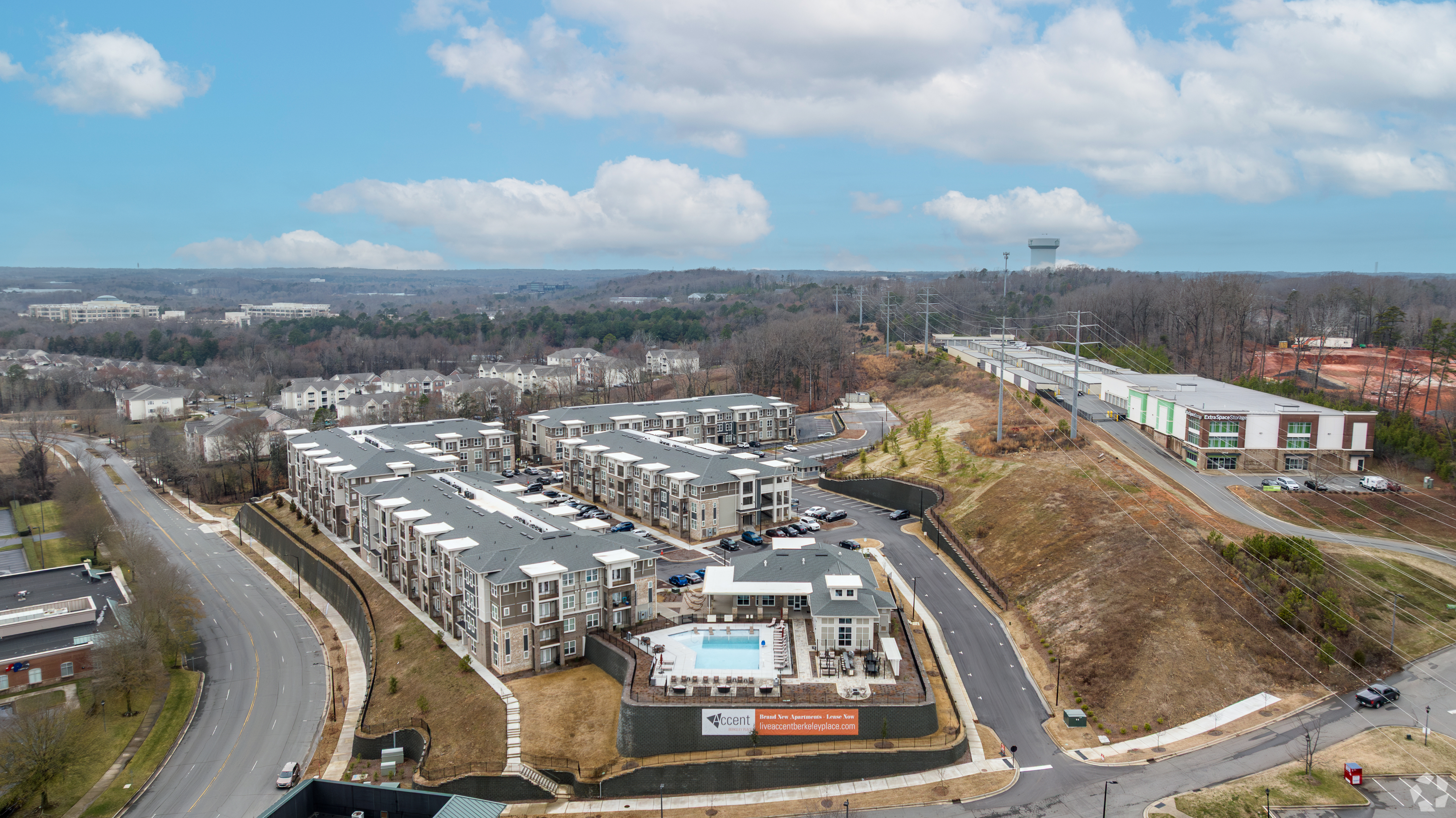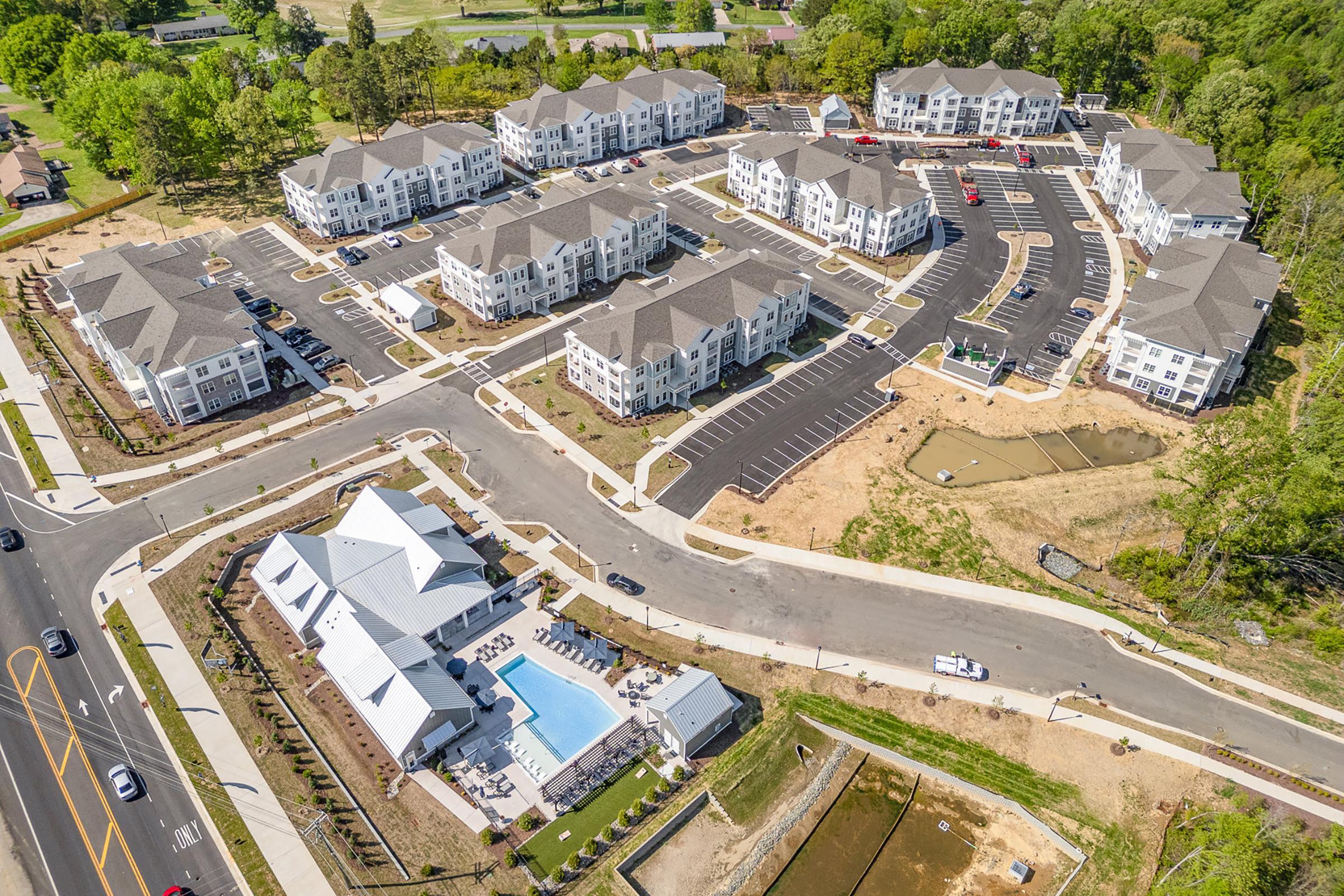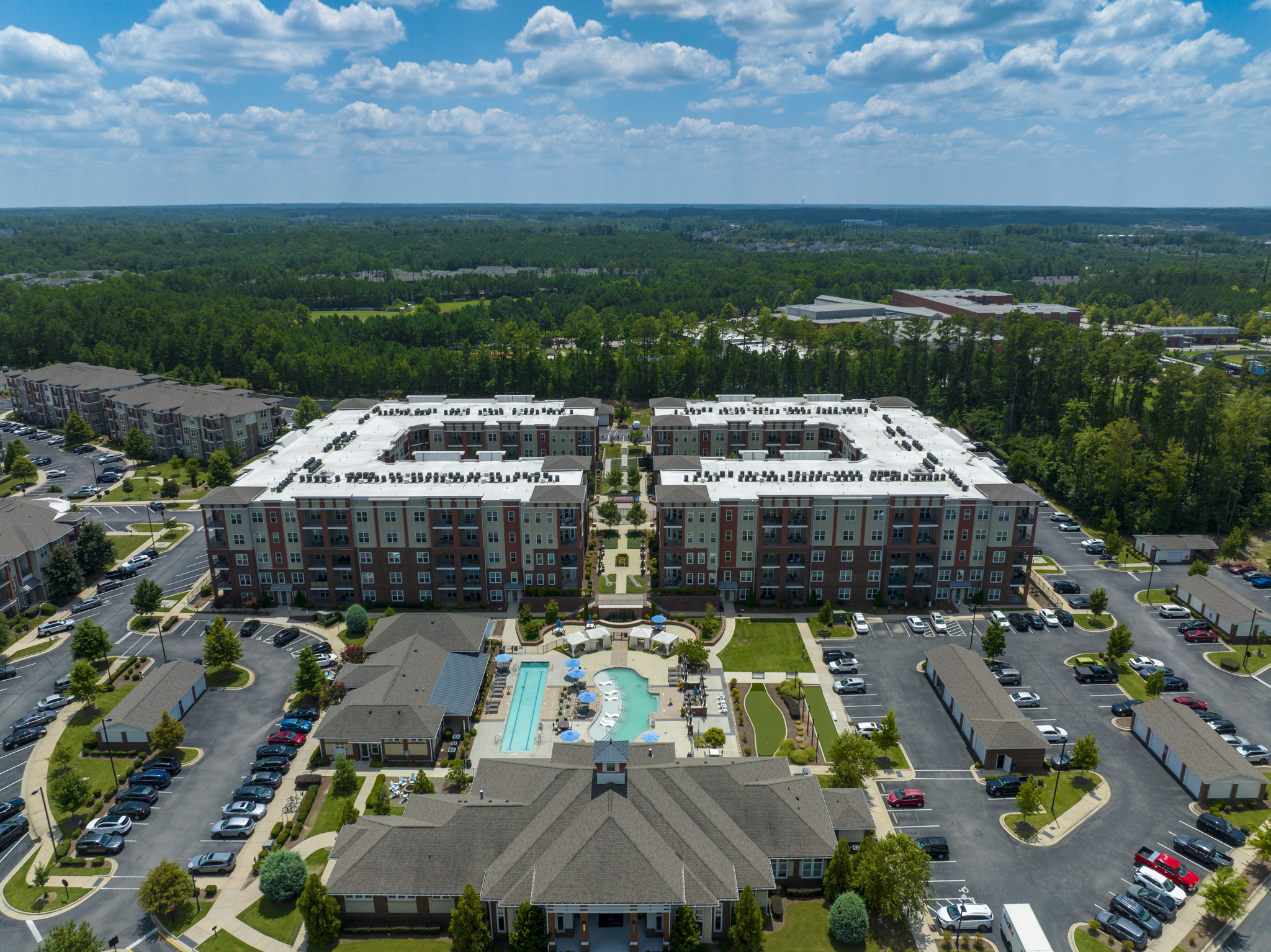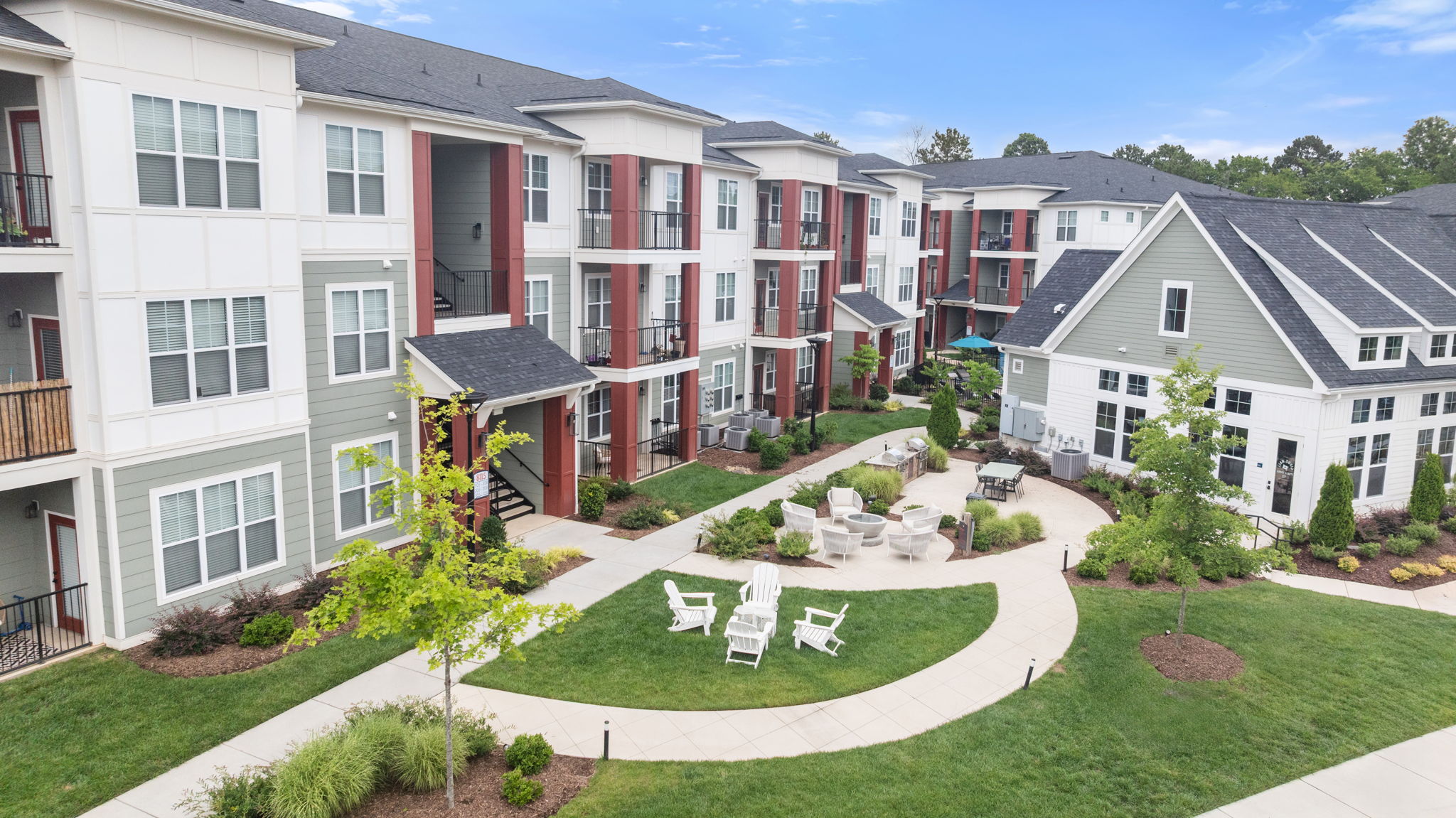We recently sat down with KWA project managers Nick Conniff and Jim Schloemer to discuss the world of Low Income Housing Tax Credits (LIHTC): what the application process looks like, hurdles many clients face, and how the team at KWA are uniquely poised to help you through the process.
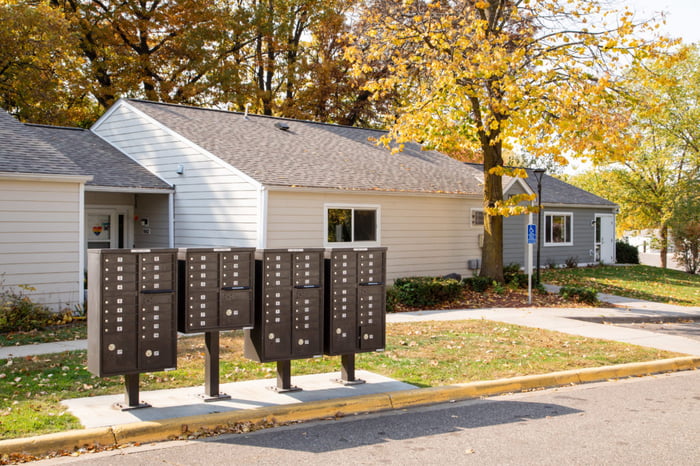
Maple Knoll Townhomes, Maplewood, MN, 2015
Both Nick and Jim have extensive experience working with LIHTC architecture and helping our clients apply for and obtain LIHTC funding for their projects.
Here’s what they had to say.
What the LIHTC Funding Process Looks Like
MN Housing’s Low Income Housing Tax Credit (HTC) Program is a financing program that offers investors a 10-year reduction in tax liability in exchange for capital to build eligible affordable rental housing units in new construction, rehabilitation, or acquisition with rehabilitation.
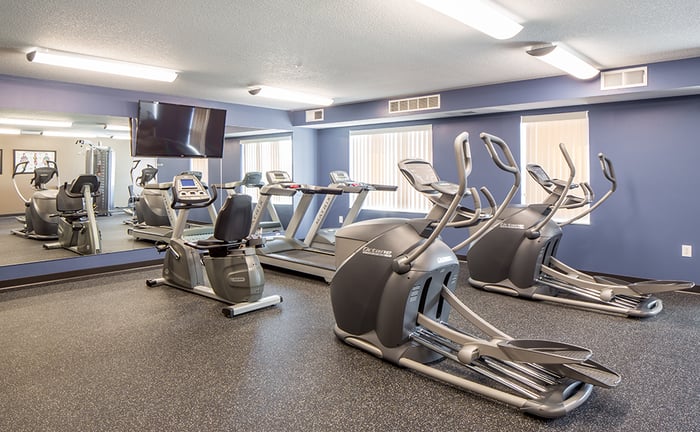
Village Commons, Savage, MN, 2013
To qualify, applicants must meet the priorities and requirements of MN Housing’s HTC Qualified Allocation Plan (QAP). Their buildings must set aside a minimum number of units that meet both rent and income restrictions to qualify for HTCs for each year of the HTC period.
There is a set amount of funding allocated for this program by the state legislature each year, but that amount can change from year to year. From that total amount of funding, MN Housing doles out the funds based on the number of applications they get and how competitive those applications are. Only a small percentage of applications actually obtain funding.
Our office typically submits around 10-15 projects for different developers each July. They haven’t all earned funding, but many have.
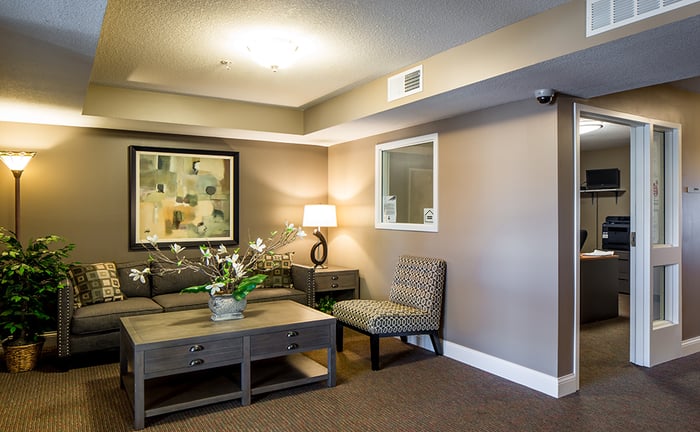 Village Commons, Savage, MN, 2013
Village Commons, Savage, MN, 2013
Common Hurdles Developers Face
With all of that practice, this topic has become a specialty for our team over the years. In that time we’ve come to know where in the process hiccups commonly occur.
Here are a few tips to make sure your LIHTC application is as strong as it can be:
1. Determine How You’ll Self-Score Your Project
MN Housing provides a Self-Scoring Worksheet for developers each year. It’s a tool that shows MN Housing how competitive your proposed project is relative to the other projects applying for funding.
The sooner you identify the ways you’re scoring points for your project(s), the better.
In other words, what are you claiming points for? There are a lot of ways to attain the points you need to qualify for LIHTC, including: enhanced sustainability, additional accessibility features, project location, financial structure…and many more.
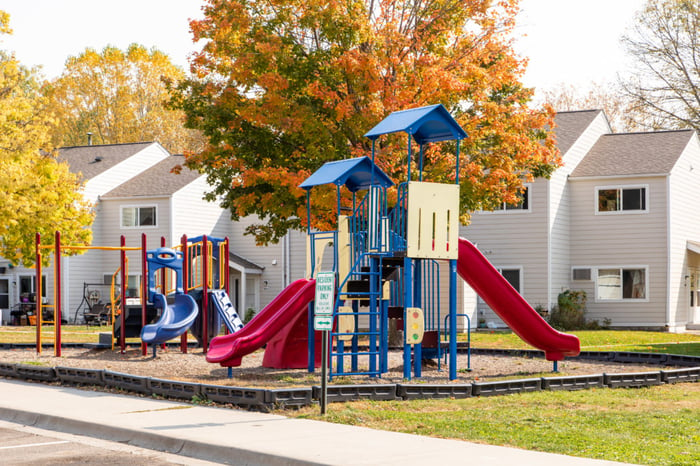 Maple Knoll Townhomes, Maplewood, MN, 2015
Maple Knoll Townhomes, Maplewood, MN, 2015
Each of these methods can affect the design and build of your project, so the earlier in the process you make this decision (and discuss the implications with your architect), the better.
For example, on the renovation side of things, we routinely have clients who sign their project up for enhanced accessibility features that they can’t actually attain without major alterations (meaning major expense). It’s important to have conversations with your architect around what’s feasible for the project and budget and what isn’t.
2. Discuss Your Application Plans With Your Project Manager ASAP
MN Housing releases the preliminary LIHTC application documentation in the first week of April. Our team needs to know as soon as possible which projects you want to submit, where they’re located, and how you’re planning to self-score those projects.
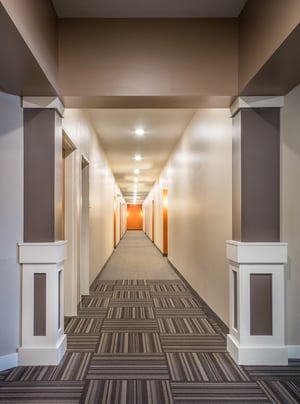 A common problem we run into is that we inevitably have a few applications every year that run right up to the last minute, so everyone is scrambling to get it done before the deadline.
A common problem we run into is that we inevitably have a few applications every year that run right up to the last minute, so everyone is scrambling to get it done before the deadline.
It’s important to have the developer-architect-contractor team get together very early on in the application window to talk through the self-scoring worksheet. As part of that conversation, we need to determine:
- What is your approach to this project? Are you going for enhanced accessibility or sustainability, or will you take another route to get the points you need?
- Do you understand the differences between the different pathways?
- What are the cost implications associated with the path you choose? Depending on which route you take, your contractor may need to provide additional price estimates.
In general, the more thoughtful and thorough your application is, the better your chances of getting funded. If we can meet with the client and contractor early to have those conversations, it helps us create a more competitive application.
Most clients come to us before they start the design process (which is the best way to do it), but there are certainly clients who have projects sitting on the boards for years, and they think, “well, maybe we can put it through this program and get it funded.” In that case, we need to have a lot of conversations around what’s feasible and what isn’t within the project design and budget.
If that’s you, know that we can certainly work with existing projects: you can bring them to us, and we can help you shape them into a MHFA application project. But the earlier in the process you come to us, the better!
3. Enhanced Sustainability Considerations
LIHTC funding has become particularly challenging to obtain over the past few years because the 9% tax credit funding, specifically, has become really competitive. Each point matters more than it used to.
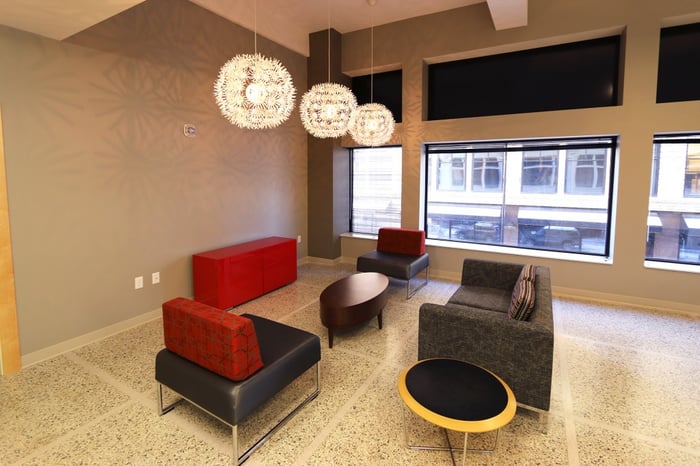
City Place Lofts, Minneapolis, MN, 2014
MN Housing has also continued to raise the bar on the minimum requirements a project needs to meet to comply with MN Housing funding…meaning those minimum requirements have become more difficult to achieve.
Enhanced sustainability, in particular, has become a big factor. In order for our projects to be competitive, in many cases our clients have to opt for enhanced sustainability via some type of 3rd party sustainability program (Department of Energy Zero Energy Ready Homes (ZERH), Passive House (PHIUS), B3 Sustainable Building 2030, etc).
However, keep in mind that all the enhanced sustainability programs have additional cost implications for your project. Additional engineering or design may be required to show compliance with those standards.
How Kaas Wilson Helps Our Clients
After completing several applications every year for many years, we have become experts in the process. We can help you build a competitive application for your LIHTC project.
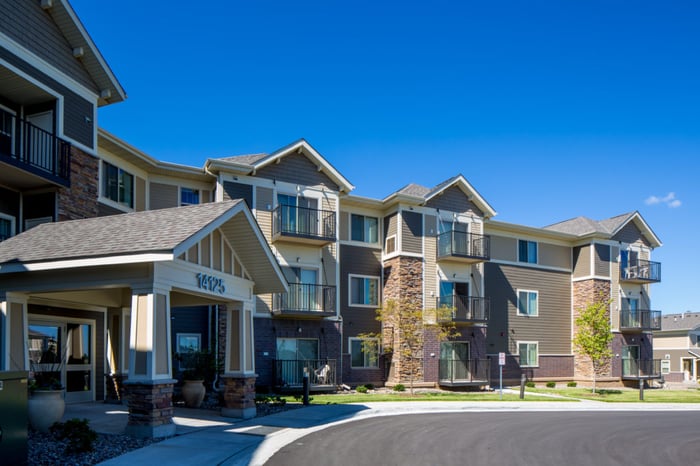
Village Commons, Savage, MN, 2013
We Keep You Up to Date on New MN Housing Requirements
We stay up to date on new requirements and the changes MN Housing makes from year to year.
We’ve found that, in many cases, developers may not know about new requirements, and contractors may price out the building prior to learning about them. When that happens, they end up having additional costs on top of what they were expecting in order to meet the new requirements.
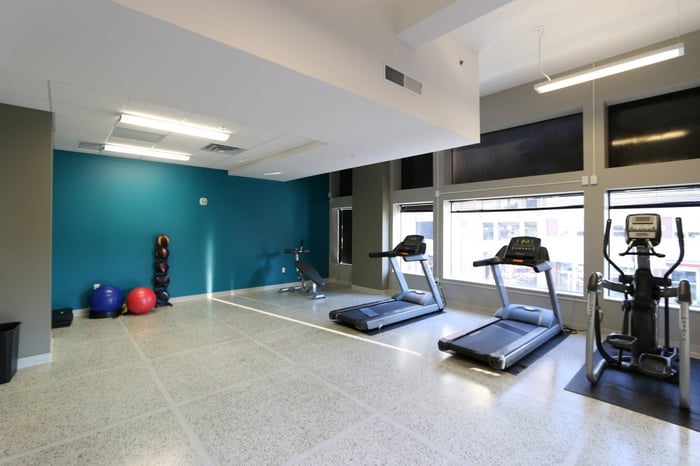 City Place Lofts, Minneapolis, MN, 2014
City Place Lofts, Minneapolis, MN, 2014
We can help make sure you know about the latest updates early in the process, saving you (and your contractor) time, energy, and money.
We Are Experts in Enhanced Sustainability and Accessibility
Our team has expertise in a variety of programs related to enhanced sustainability and accessibility: two of the more popular paths to earning your points.
 Nick Connif notes that we have experience with:
Nick Connif notes that we have experience with:
"SB2030, DOE ZERH (Department of Energy Zero Energy Ready Homes) and Passive House. We can help developers understand the trade-offs between these programs and which would be the best fit if they want to claim enhanced sustainability points for their project. We also have extensive experience with the Universal Design program—relating to enhanced features for people with disabilities, another category developers can get points for.”
 Jim Schloemer adds,
Jim Schloemer adds,
“In addition to Universal Design, we also have extensive experience with the Uniform Federal Accessibility Standards (UFAS) Section 504 requirements, which are triggered when a project involves federal (HUD) funding.”
We Can Advise You On How To Make Your Application More Competitive
Because so many of our clients put in applications each year, we have a good understanding of what makes an application competitive.
For example, if all of our clients are going for Tier 3 enhanced sustainability, we can recommend you do so too. We’ll talk you through what it means to take on Tier 3 enhanced sustainability and explain what you need to do to reach those requirements.
We know how to guide you toward not only the points that will make you more competitive, but also the ones that are the most feasible for your budget.
Projects We’ve Helped Get LIHTC Funding
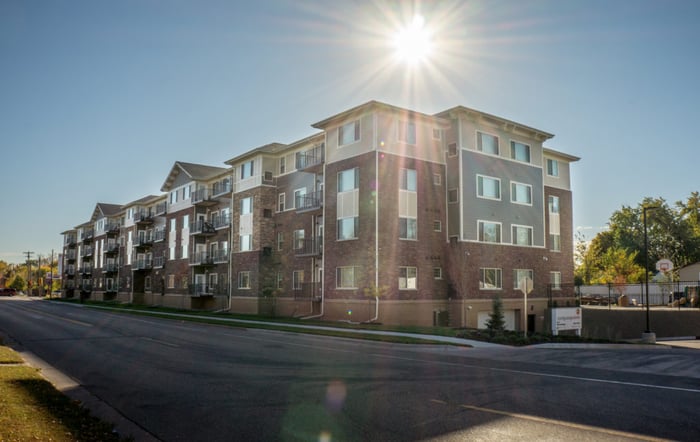
Compass Pointe, New Hope, MN, 2014
Over the years, we’ve successfully helped many projects obtain funding, including:
- The Crossings at Valley View, Bloomington, MN, 2009
New Construction, Affordable Housing, 50 units.
- Riverside Terrace, Thief River Falls, MN, 2013
Renovation of existing Affordable Senior Living, 96 units
- Village Commons, Savage, MN, 2013
New Construction, Affordable Housing, 66 units
- Chaska Townhomes, Chaska, MN, 2014
New Construction, Affordable Housing, 40 units
- City Place Lofts, Minneapolis, MN, 2014
Historic Rehabilitation and Conversion to Housing, 55 units
- Compass Pointe, New Hope, MN, 2014
New Construction, Affordable Housing, 68 units
- Eastport Apartments, Mankato, MN, 2014
Renovation of Existing Affordable Housing, 78 units
- Seward Square Apartments, Minneapolis, MN, 2014
Renovation of Existing Affordable Housing, 103 units
- The Square on 31st, Rochester, MN, 2014
Renovation of Existing Affordable Housing, 100 units
- Gus Johnson Plaza Apartments, Mankato, MN, 2015
Renovation of Existing Senior Housing, 108 units
- Lewis Park Apartments, St. Paul, MN, 2015
Renovation of Existing Senior Housing, 108 units
- Maple Knoll Townhomes, Maplewood, MN, 2015
Renovation of Existing Townhomes, 57 units
- Carver Affordable Housing, Carver, MN, 2016
New Construction, Affordable Housing, 68 units
- Century North Apartments, Oakdale, MN, 2016
Rehabilitation Remodel, Affordable Housing, 177 units
- Villages at Frost-English, Maplewood, MN, 2016
New Construction, Affordable Senior Housing, 50 units
- Dublin Crossing, Mankato, MN, 2017
New Construction, Affordable Housing, 50 units
- Riverdale Station East and West, Coon Rapids, MN, 2017
New Construction, Affordable Housing, 180 units
- Bridgeway Apartments, Robbinsdale, MN, 2018
Renovation of Existing Affordable Housing, 45 units
- Park Acres Apartments, New Hope, MN, 2018
Renovation of Existing Affordable Housing, 41 units
- DARTS Senior Apartments, St. Paul, MN, 2019
New Construction, Affordable Senior Living, 172 units
- Dublin Heights Apartments Phase II, Mankato, MN, 2020
New Construction, Affordable Housing, 45 units
- Alo Apartments, Buffalo, MN, 2021
New Construction, Affordable Housing, 60 units
- Owasso Gardens, Roseville, MN, 2022
New Construction, Affordable Housing, 60 units
👉 See more of our recent projects here.
Looking for a company well-versed in LIHTC architecture? Kaas Wilson Architects has the expertise you need. Contact us for your next project—we’ll help you put together a competitive application and a design that suits your vision and budget.
Search

Popular Posts

The Agave House Apartments in Casa Grande,...
An upscale, 132-unit market rate apartment...
Aster House is a brand new, 204-unit,...
ABOUT THE PROJECT
The Fern is a 55+...
Recent Posts

Growing Charlotte Team Nears 20 Employees...
Accent Berkeley Place Apartments in...
Westgate Landing Apartments in Charlotte,...
Discover The Aster in Cary, NC — a luxury...
Modern multifamily design in North...

